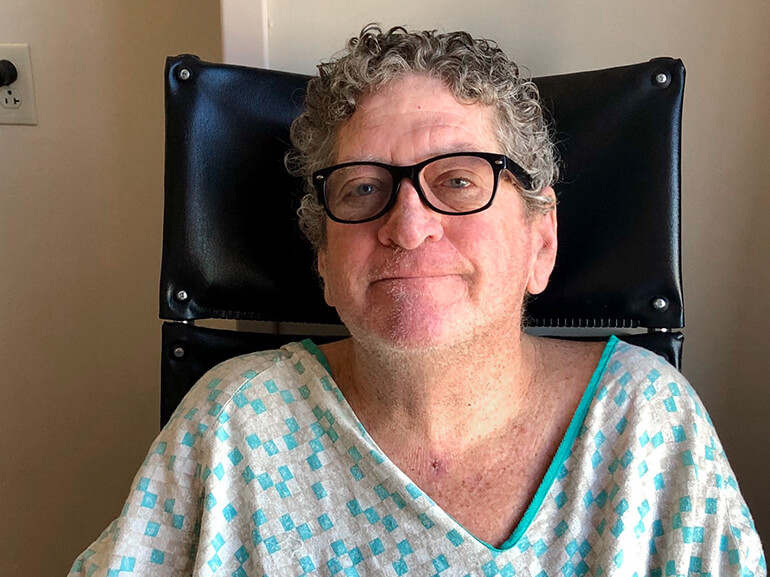Paul's Story

The healing power of music
Paul Coleman was enjoying a reunion with his five brothers over the Thanksgiving holiday. As the week wore on, Paul started feeling bad. The 63-year-old was having trouble catching his breath yet didn’t want to cut short time with his family.
His sister-in-law, Roxanne, urged him several times to go see a doctor. Paul felt confident he’d turn the corner the “next day.” Finally, Paul lost consciousness and Roxanne wasn’t taking “no” for an answer. After being assisted to the car, Roxanne drove Paul to urgent care. The doctors took one look at him and called 911.
An ambulance took him to the local hospital, where he was diagnosed with the flu and pneumonia. After being admitted, he became weak and fell into respiratory failure. Paul was sedated and placed on airway support, breathing and feeding tubes. Then, other serious conditions emerged. He developed blood clots in both legs and his lung and fell into septic shock. To compound the situation, there were multiple chronic issues requiring management, including high cholesterol, high blood pressure and diabetes.
Paul spent 27 days in intensive care, fighting for his life before stabilizing. He had a long road to recovery and needed more time to heal. His family chose Select Specialty Hospital – San Diego. It was a long haul from his home in northern California — more than 12 hours — but his wife Kathleen didn’t want to risk moving him too far.
Paul arrived unable to breathe, eat, speak or move on his own. He was highly confused and sometimes combative.
His family wanted Paul to get back to the fun, active, independent guy he was before getting ill. They wanted to go fishing and hear him play the harmonica again.
A physician-led team of therapists, nurses, pharmacists and dietitians created a plan to help Paul heal.
Despite his confusion, respiratory therapists began testing whether Paul’s lungs could being liberated from the ventilator. Paul responded positively, and the respiratory team began working around the clock to increase the level of work his lungs could handle independently.
Simultaneously, physical and occupational therapists implemented a mobility program tailored to his clinical needs. These small movements – rolling and sitting up in bed, at its edge and moving to a chair – according to studies* help improve a patient’s odds of liberating from a ventilator.
Nurses checked and repositioned Paul regularly to avoid pressure sores.
In two weeks, Paul’s awareness improved. The breathing tube and airway support were removed and he participated in therapy more actively.
Pharmacists monitored the intravenous blood thinners and blood pressure medications, calibrating doses for maximum therapeutic impact.
Speech therapy began working with Paul on throat, mouth and jaw exercises helping him relearn to swallow food safely. Working with a nutritionist, Paul was able to slowly reincorporate his vegetarian diet until he was eating regular food again.
With improved oxygen and nutrition, Paul began making strides in therapy. He began using a walker and navigated short distances with someone standing by, just in case he needed help.
Paul gives Roxanne kudos for making him go to the doctor and for the staff members in the ER and ICU who repeatedly saved his life.
He credits his swift recovery to the team at Select, especially the therapists who cared for him daily.
Paul said his one bit of advice is to never start smoking and always get your flu shot.
On Jan. 26, after almost two months in the hospital, Paul left for a brief stay at his brother’s home. He flew back to Ferndale two days later, eager to reunite with his wife, Kathleen, and their cocker spaniel puppy, Bella.
He and Kathleen plan to take a second honeymoon as soon as he is fully recovered.
In this video, Paul offers a sample of one his favorite parts of speech/respiratory therapy – playing his beloved harmonica again.
*Unroe, Ann Int Med, 2010, 153, 167